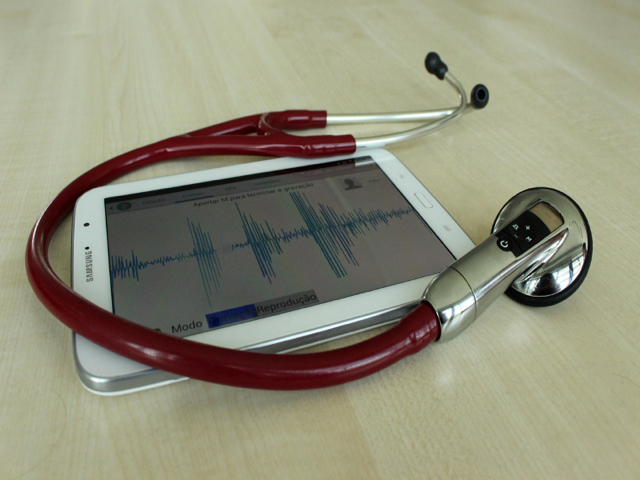Researchers from Portugal, Brazil, the United Kingdom, and the United States of America joined efforts to develop and test a new heart sounds analysis method for the fast and non-invasive identification of pulmonary hypertension. The results of this research work, recently published in the IEEE Access journal, show that the path to a smarter diagnosis of this disease is open.
“Pulmonary hypertension is a serious disease; however, if diagnosed quickly, it can be easily controlled with drugs”, explained Francesco Renna, researcher at INESC TEC. But is it possible to make the diagnosis faster? A group of researchers, including INESC TEC members, addressed said challenge and developed a new method of analysis of heart sounds, focusing on the identification and separation of the sound components produced by the aortic valve and the pulmonary valve. “This separation can be very useful to quickly and non-invasively identify pulmonary hypertension.”
How? The researcher stated that “the method we propose features a signal pre-processing step, which serves to isolate the aortic and pulmonary components of the second heart sound – tested using a set of recordings obtained as part of the collaboration with the Real Hospital Português in Recife, Brazil”. The team used an Artificial Intelligence algorithm (kernel ridge regression classifier), applying it to features of the second heat sound, and using the separation of components obtained with the pre-processing method.
The result? “The algorithm was able to detect the presence of pulmonary hypertension in a set of 43 patients – 11 with pulmonary hypertension and 32 without pulmonary hypertension – with a quantified reliability in terms of area under the ROC curve equal to 0.72. This means that we were able to demonstrate that our method allows us to identify the presence of pulmonary hypertension effectively, using a simple algorithm and without using many training examples”, he mentioned.
Based on these results, recently published in the journal IEEE Access, the team – now moving forward with the development of solutions focused on the non-invasive detection of pulmonary hypertension – is working on more sophisticated methods and collecting more data to validate the potential of the solutions. “The idea is that, in the future, these solutions can be used in all healthcare units, allowing a low-cost screening of pulmonary hypertension and avoiding the use of complementary tests, which are often more expensive”, concluded the researcher.

The researcher mentioned in this news piece is associated with INESC TEC and UP-FCUP




 News, current topics, curiosities and so much more about INESC TEC and its community!
News, current topics, curiosities and so much more about INESC TEC and its community!